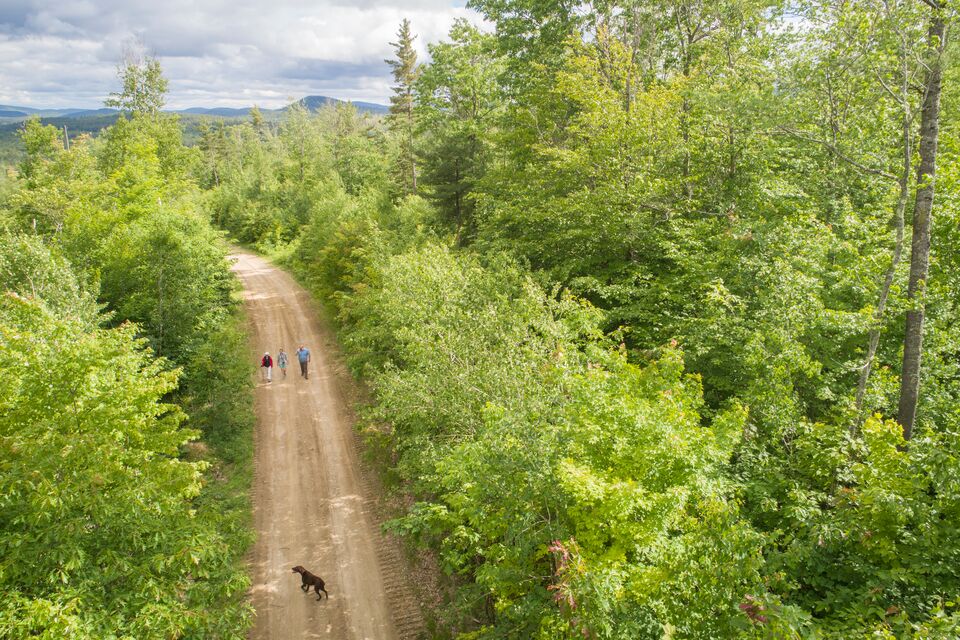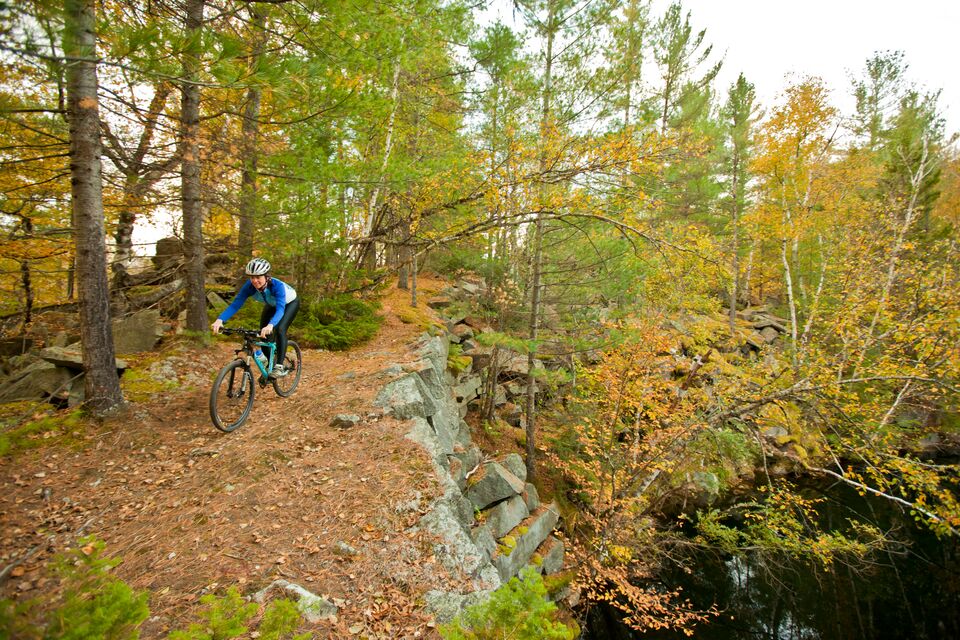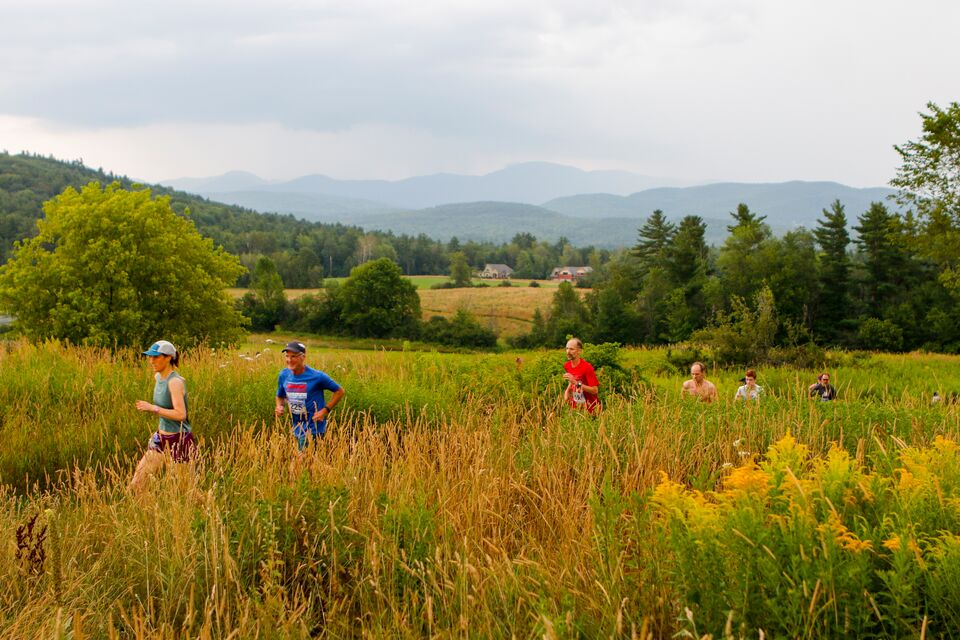Last updated on February 6th, 2024
Forests are shrinking and disappearing across the United States.
Wildfires and real estate development have taken their toll. Aggressive harvesting by businesses interested in quick profits is also to blame.
The recent loss of forestland actually represents a reversal of a much longer trend, in which forests cleared for farmland during the colonial era slowly regenerated over many decades. But the pendulum is now swinging the other way. According to a 2017 study by Harvard University, New England alone is losing 65 acres of forest every day.
Over the past two decades, we’ve pioneered a movement to save our forestlands. Our “community forest” model is centered on local ownership, with a town or a nonprofit buying a forest and managing it for conservation, public access, and economic benefits.
Betsy Cook, the Maine state program director at The Trust for Public Land, talks with us about the community forest model and why it holds promise to protect this vital resource.
Q: When people think of forests, they probably imagine a state or federal forest or maybe one owned by a timber company. So what do we mean by “community forest”?
A: Community forests are forests managed by the community for the community. Four pillars define our approach to community forests. First, the community participates in the management decisions around the land. The second is that benefits flow to community. That could mean proceeds from sustainable timber harvesting or less tangible benefits from tourism and the outdoor-recreation economy. The third piece is community ownership—actually having the land owned by the community, which which can be a town, county, nonprofit, or other community entity. It’s a form of ownership that makes sure the community is really involved in the stewardship of the land. The last piece is permanent protection. This will ensure that the forest is conserved and that benefits continue to flow to the community for generations to come.
[Read more: Community forest in Maine expands, ensuring access for generations to come]
Q: How did the community forest model come about?

A: The concept of a community forest has been around for centuries or even thousands of years. So, we are building on an idea that is engrained in many cultures. But the modern Trust for Public Land–led movement took off about two decades ago with a group called the Community Forest Collaborative; The Trust for Public Land was a core member. The collaborative helped develop resources for towns to create community forests, laid out best practices, and established a federal funding program. The U.S. Forest Service’s Community Forest and Open Space Conservation Program supports local communities that want to create community forests. Our advocacy led to the establishment of that program in 2014.
Q: What kind of progress have you seen in the past 20 years?
A: The first community forest we helped establish was in Randolph, New Hampshire, in 2001. Since then, we have helped to directly support the creation of more than 30 community forests across the country, covering at least 30,000 acres. The size of each forest ranges widely, from a few hundred acres to 13,000 acres. New England is our most active region, and a large part of that has to do with the strong system of town governance. That matches really well with the community forest model. Most communities have a town meeting every year, and often the community forest is voted on at the annual meeting. You get 300 people in these old town halls and everyone gets to see each other. Residents raise a green placard for Yes and red for No. It’s a great example of civic engagement and community participation. There are also community forests we’ve worked on in the Pacific Northwest, so the model has taken hold there as well. And there’s a pocket of activity in the Midwest, in places such as Wisconsin and Minnesota.
[Explore our work: A new community-owned forest keeps outdoor adventure in the lesson plan]
Q: One of the potential economic benefits to the town stems from sustainable forestry. What does that look like, and is it good for the forest?

A: Yes, it absolutely is. The planning for a community forest includes optimizing for wildlife and habitat, recreation, and sustainable forest management. Often there are habitats you’re trying to improve and cutting some trees will benefit a bird or mammal species. When done well, sustainable forest management is beneficial for ecology and wildlife, while also creating revenue for the town. With community forests especially, the forest management plan is written to a high standard. Any cutting of trees is done with the utmost care and concern for the health of the forest. Typically, we are purchasing from industrial forest owners motivated by a quick financial return. That kind of management leads to a heavier timber harvesting. By contrast, community forests are for the long run. In some cases, the town might harvest only what is needed to cover the lost property tax revenue from the previous owner. Other towns might lease a small patch of the forest to a maple syrup producer, which taps the trees.
Q: How does a community go about creating a community forest?
A: Sometimes, the impetus is a piece of land that suddenly comes on the market. It might be a forest that community members were allowed to use and love, and they want it to be protected. Or a community will come to us and say, ‘We don’t have a parcel in mind, but we want a community forest because we love the model and want the benefits.’ In that case, The Trust for Public Land does some mapping and finds a piece of land that is a good fit. If we partner with a town government, we have a process we work through. After identifying forestland for the community to acquire, we negotiate with the landowner to secure the property. Then we raise money through public and private funding sources. But before the land is acquired, there is a robust community planning process and a management plan is developed. Finally, we acquire the land and convey, or transfer, the forest to the town.
[Read more: How community forests chart a path to prosperity and connection]
Q: How do residents use their community forests?

A: Usually, a governance committee is established to implement the management plan. Some towns host trail races through their forests and organize art festivals. A town in Vermont had a trick-or-treating event in the community forest on Halloween. Another town, in New Hampshire, created new glades for backcountry skiers and also blazed an educational trail with signage about wildflowers and animals. Some towns or nonprofits allow local residents to harvest wood from the forest to heat their homes. These places really come to life with the energy of the community. They also are all about meeting a community’s specific goals and needs.
Q: Besides the obvious conservation and economic benefits, are there other ways a community forest helps local towns and residents?
A: Yes, certainly. Community forests guarantee public access for recreation, which can lead to improvements in both mental and physical health. Studies show that exposure to nature reduces stress and alleviates depression. The forests are also an educational asset, with schools using them for outdoor learning. Then there is the social benefit—the community-building aspect. Community forests are created through a very public process. The local community comes together with a shared goal and makes collaborative decisions. Research shows that community-building creates opportunities for people to become more civically engaged and connected to their neighborhoods. Finally, community forests—like all forests—mitigate climate change since trees absorb and store carbon dioxide. New England is projected to lose 1.2 million acres of forest, along with 19 percent of its carbon-storage capacity, by 2060. A changing climate and deforestation are threatening some of the most biodiverse regions of the United States. Protection of our forested landscapes is one of the best strategies we have to combat climate change.
This article was originally written for The Trust for Public Land’s blog.
